Non-formal learning: a day with the Product Design class in Ferrara
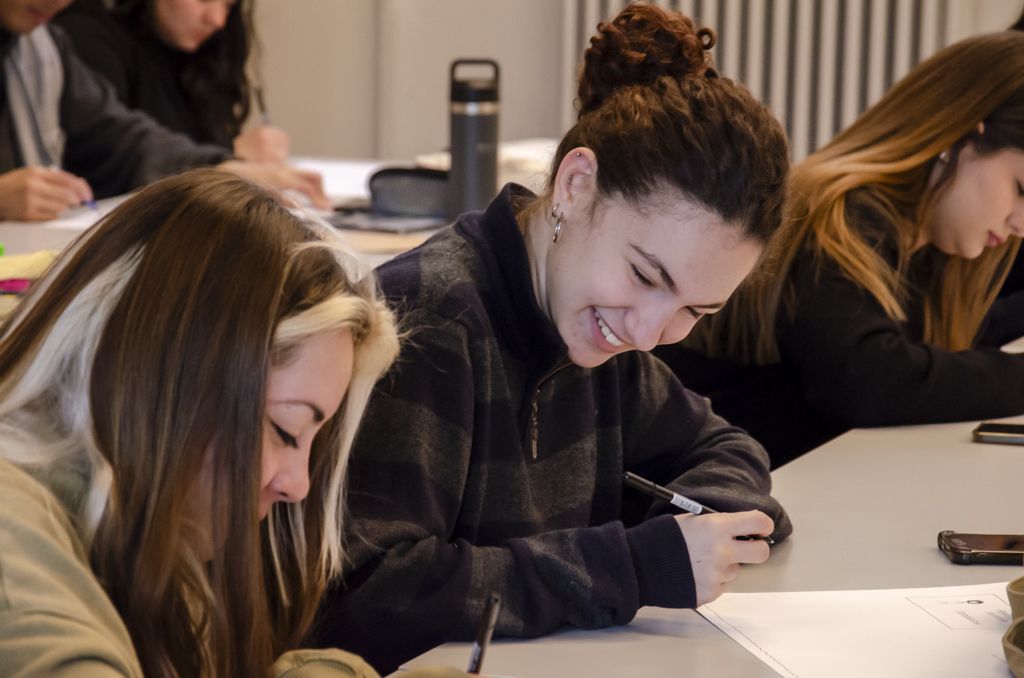
Bologna Central Station, 8:30 a.m. The Yobi Crew hits the road. Objective: to hold a memorable lecture at the Faculty of Product Design at the University of Ferrara. After the train ride, we arrive at the faculty.
We take our seats in front of the desk. The first students join us. The faces of some reflect the need to earn the mandatory CFUs that our course will allow them to obtain; others are simply dazed by the morning hour (as much as we are).
But they do not yet know what awaits them.
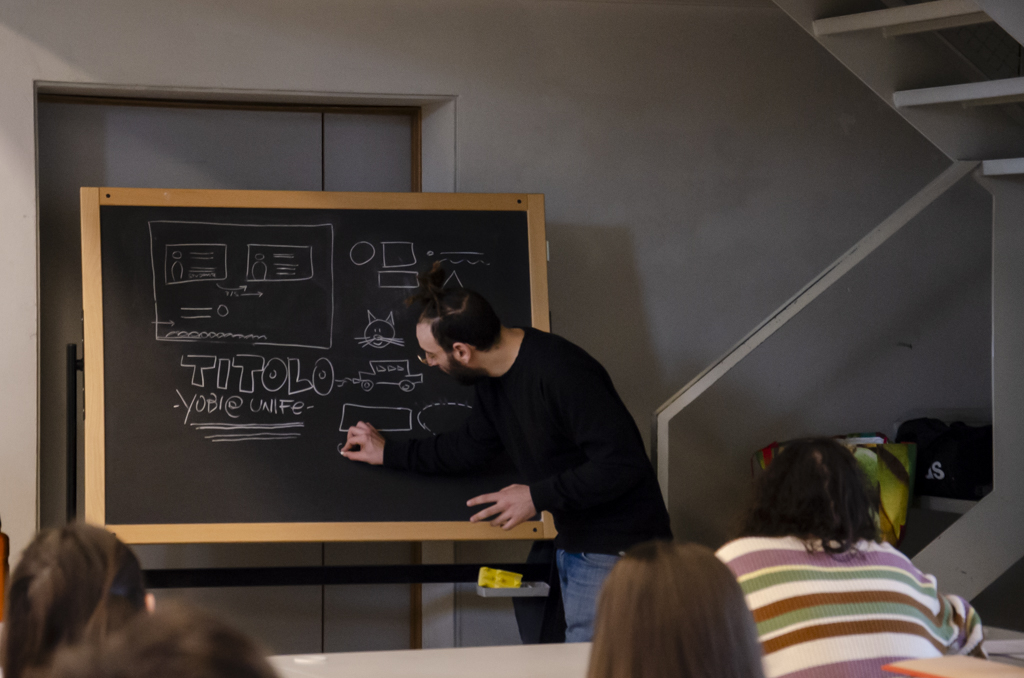
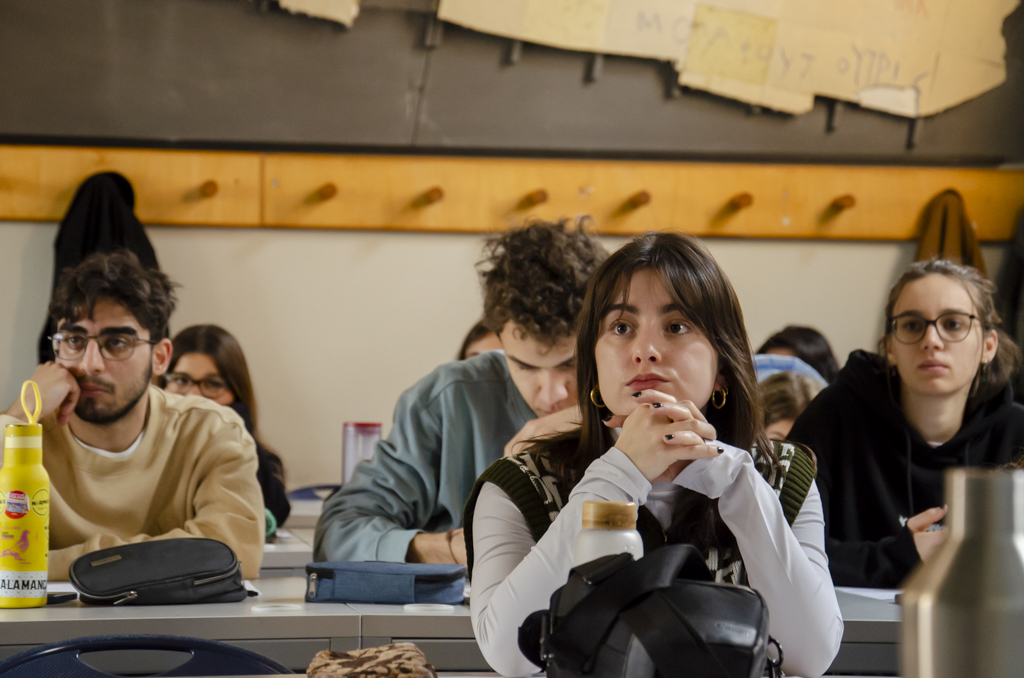
We are about to challenge design students, who are used to work with a square, protractor and ruler, with some exercises that will test their creative thinking.
First, we broke the ice by asking them what their expectations for the day were. Most of the participants, intimidated by drawing, chose to attend the workshop to improve their sketching skills. But they were also interested in learning a new form of expression, in stealing the best from a profession that for many, prior to this class, was unknown.
Said and done, to the blackboard!
Our goal was not just to teach an art (as much as no one beats us at drawing toy-cars, little men, kittens), but to engage the students in thinking about the functionality of scribing and how they can apply it concretely in their work.
Although initially doubtful, the kids quickly understood what we were asking them to do – imagine their future version, what skills they already possess and what they would like to acquire… psychologist material – but they became especially involved when we asked them to design their dream table.

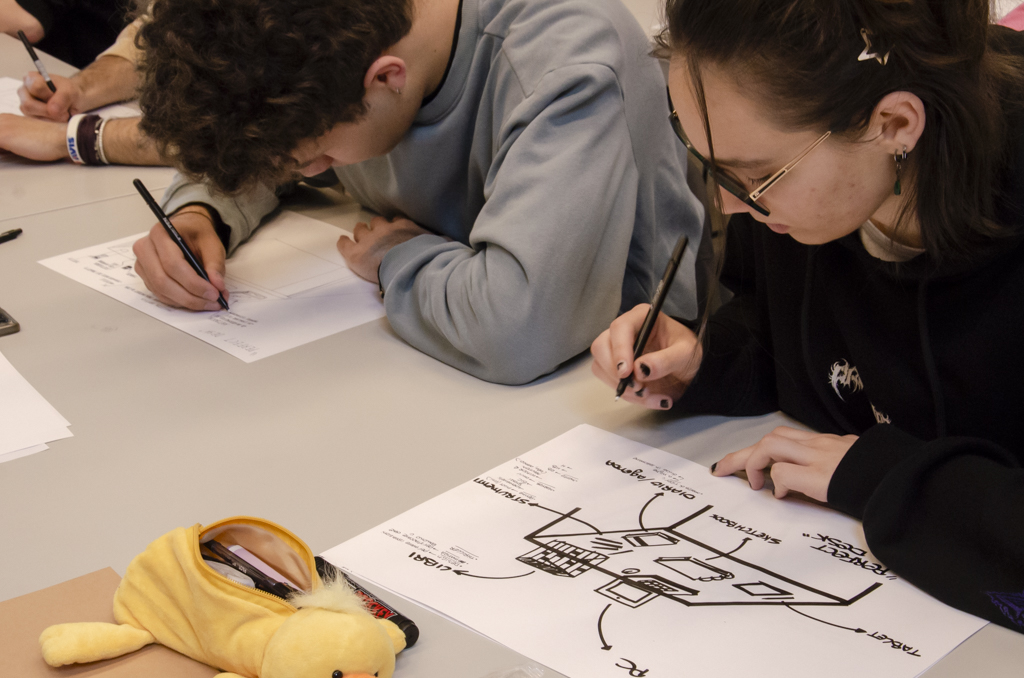


Squared and perfectly crafted tables materialized before us. Their task was to compartmentalize the essentials of the bench on which they routinely work: they had to focus on categorizing, hierarchizing the components, and in this way making a neat table that displayed at a glance the order of the parts.
With these exercises, we wanted to bring back the importance of “handmade” in the digitized world of design: anything, made by hand, acquires a distinct identity. Next, we wanted to teach them a method of reading the world, that is “visual thinking.” It is not only about making beautiful pictures, but there is behind a work of connecting information, hierarchy in presentation and dimensions of concepts.
At this point, once they understood the goal behind what we were asking them to do, all the restraints melted away. The students began to combine their design skills with visual thinking, challenging themselves. Our approach aimed to build a new mindset in them through a process of non-formal education.
But what is meant by non-formal education?

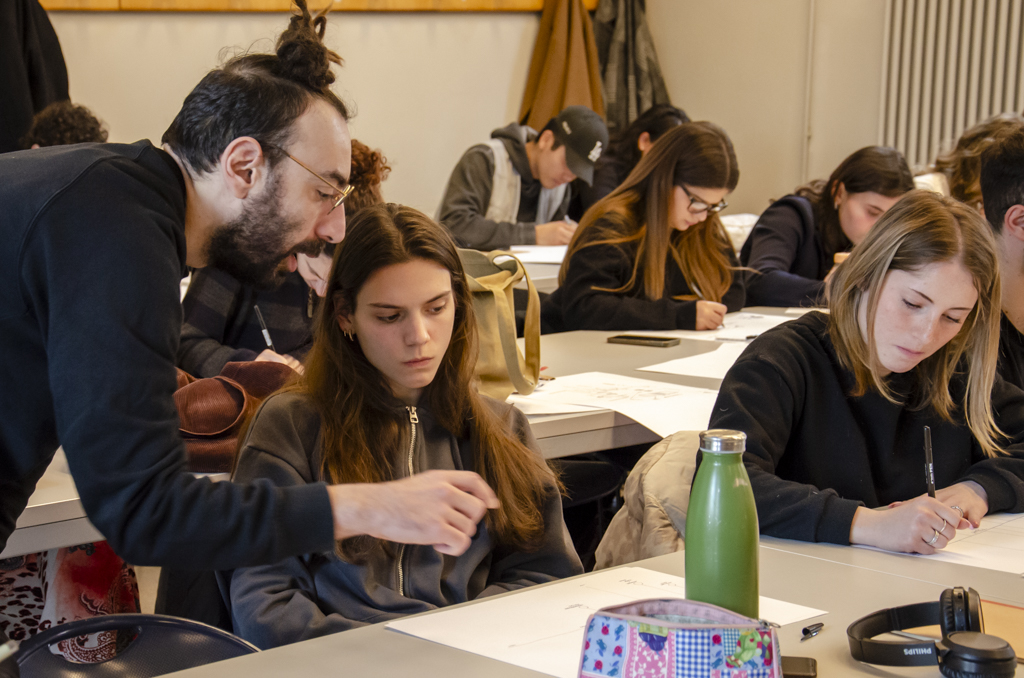
In the first place, it means an educational process that totally disrupts the traditional concept of “vertical” and hierarchical education between student and teacher, by opposing it rather to a “horizontal” system. We deconstructed the ex cathedra teaching with the supra cathedram method (as soon as Magdalena, our very attentive supervisor, let her guard down).
We created a safe space in which to promote the sharing of ideas and free thinking. The next exercise, in fact, the sketching of body movements, turned into practice: learning directly in the field is the best way to make a lesson unforgettable.
Education should be seen as an active and dialogical journey, in which individuals do not remain statically in a form, but are provided with all the tools and skills to continue to revolutionize themselves and their surroundings. The journey of building this ideal space, where falling means finding someone ready to pick up where you left off, started almost as a game and laid the foundation for an involved and responsible approach within the classroom.
Our work as facilitators consists precisely in this: we not only act in the world of ideas, but also in the space, creating safe workplaces in line with the goals to be achieved.
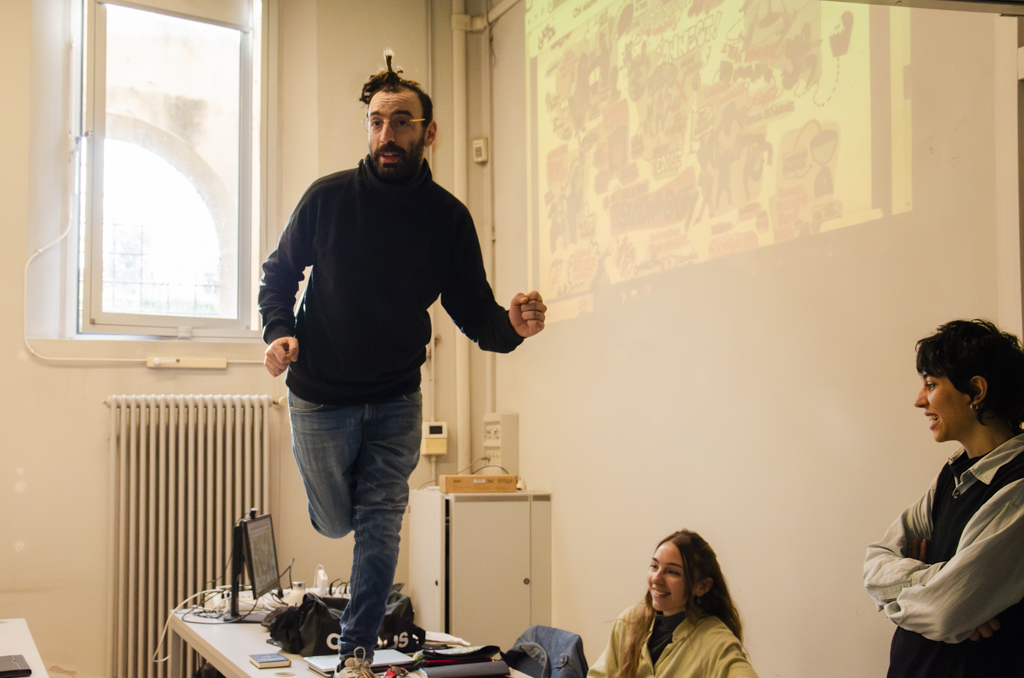


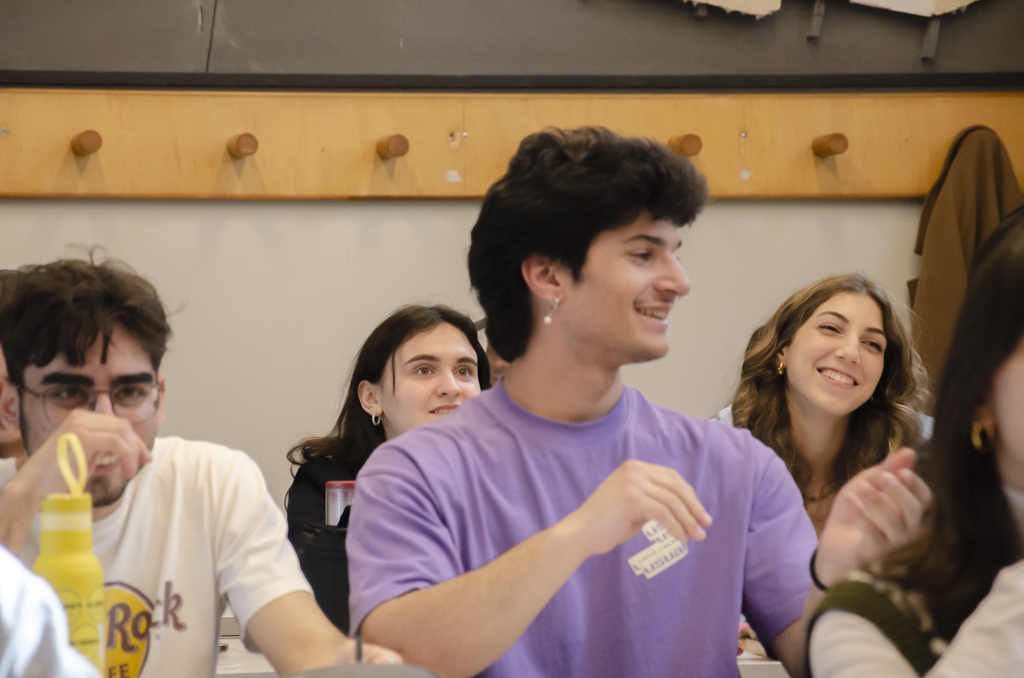
In the second part of the workshop day, in fact, the results of the practice were clearly evident.
The drawing skills we teached the students were needed to complete the task we invested them with later. By also dealing with facilitation pathways – meaning, activities that involve human capital and require group collaboration – we tried to challenge them by demanding something unexpected: to develop a product from a service (it was like asking them to do a fresco of the whole day).
In addition to getting them to think – almost wracking their brains to understand our requirements, all intentional of course – and apply the skills they acquired, the task allowed them to move freely in the equal environment that was being built. The four groups did, in fact, work at full capacity, pulling out more than satisfactory results.

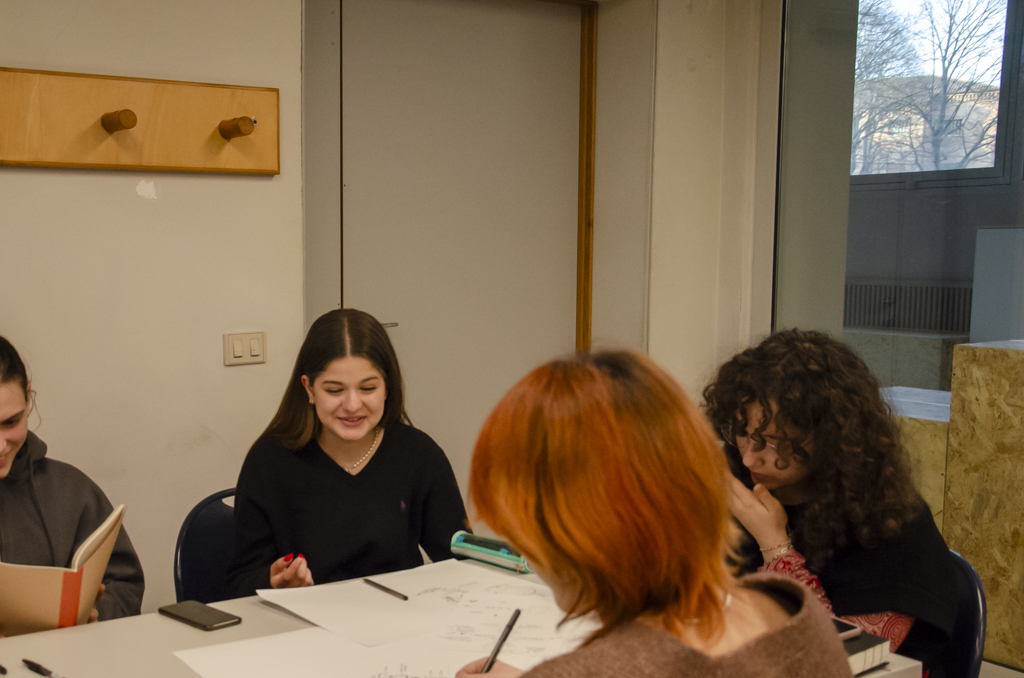
Two of them came up with start-ups, and the other two with actually physical products. If we had given them more time, they probably would have brought us prototypes already. What gave us the most satisfaction was to see the involvement, belonging and enthusiasm that everyone had for their work, without fear of receiving any kind of judgment .
We were able to annul distances, create a place where we could share even downfalls and where we were not afraid to challenge. After all, students have to deal with the rigid world of design every day; what we wanted to offer them was a lesson in which experience, life, and education came together.
The smiles on their faces attested the success of the day, and perhaps, in addition to the knowledge, they will take home extra teachings that can be useful in their future working and professional lives.
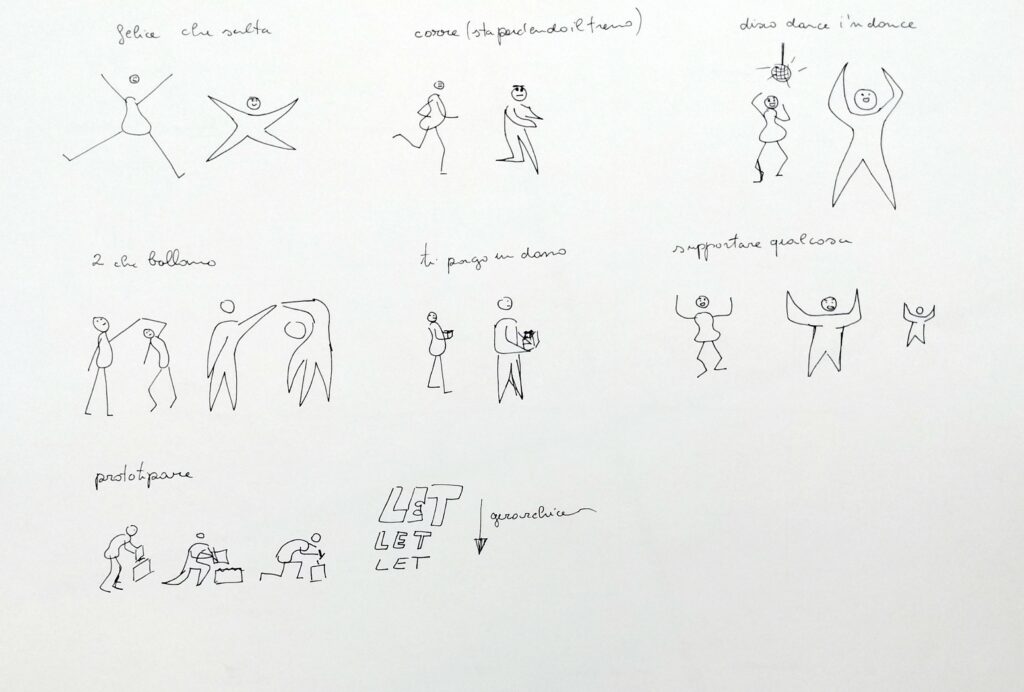

If you want to know more:
B. Agerbeck, The Graphic Facilitator’s Guide, Loosetooth.com Library, 2012
W. Brand, Visual Thinking, Amsterdam, BIS publishers, 2017
N. Herting, H. Willelms, Draw Your Big Idea, San Francisco, Chronicle books, 2016
E. Lupton, Graphic Design Thinking: Beyond Brainstorming, New York, Princeton Architectural Press, 2011
D. Sibbet, Visual Meetings, Hoboken, Wiley, 2010
D. Sibbet, Visual Teams, Hoboken, Wiley, 2011